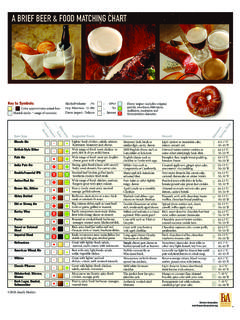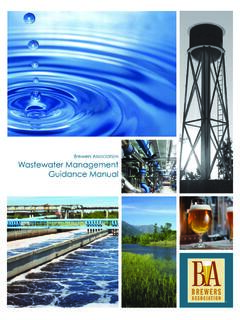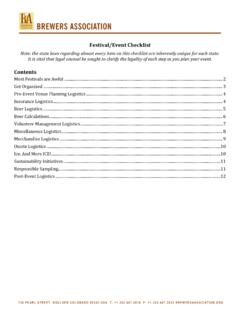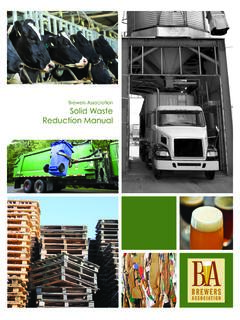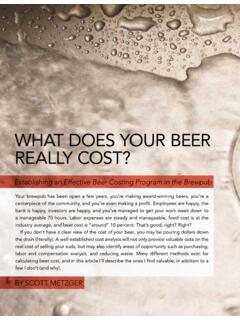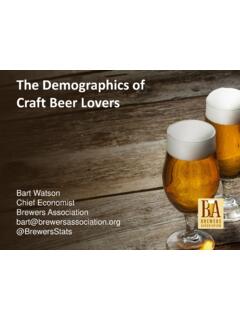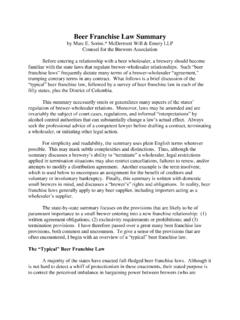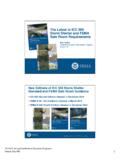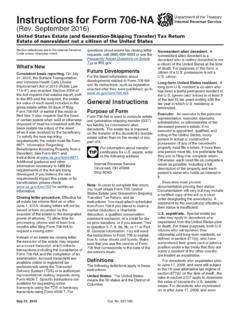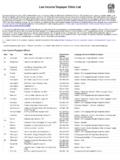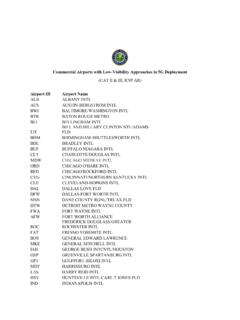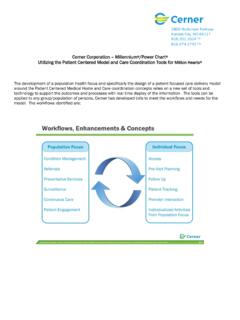Transcription of Brewers Association Energy Usage, GHG Reduction, Ef ciency ...
1 1 Energy usage , ghg reduction , Effi ciency and Load Management ManualEnergy usage , ghg reduction , Effi ciency and Load Management ManualBrewers AssociationEnergy usage , ghg reduction , Effi ciency and Load Management usage , ghg reduction , Effi ciency and Load Management ManualAcknowledgements .. 4 Introduction .. 5 Section 1: Sector Profi le Energy Use in Breweries .. Overview of Current Energy Use/Greenhouse Gas Performance and Trends .. Regulatory Drivers .. Non-Regulatory Drivers Image/brand, community ties.. Risks and Opportunities Energy /Greenhouse Gas reduction .. 8 Section 2: Data Management .. Data Collection .. Ensuring accuracy .. Benchmarking Key Performance Indicators (KPIs) .. Guidelines for Setting Measureable Goals and Objectives ..13 Section 3: usage & reduction Best Practices .. Brewing .. 16 Best Practices CO2 Recovery Systems .. Packaging.. 18 Best Practices - Variable Speed Drives.
2 Support Systems (Utilities) .. 21 Best Practice - Lighting .. 21 Best Practice - Compressed Air .. 23 Best Practices Boiler Effi ciency .. 26 Best Practices - Boiler Heat Recovery .. 31 Best Practice - Condensate Recovery .. Food Service .. 37 Best Practices - Refrigeration .. 37 Best Practice Tankless Water Heaters (On-Demand Hot Water) .. 38 Best Practices - Cleaning/Sanitization .. 39 Best Practices - Kitchen Area .. 39 Best Practices - Dining Room .. 40 Best Practices - Parking Lot/Outdoor Seating .. Concerts and Events .. 41 Section 4: Onsite Renewable Energy .. Technology and Use Application Review .. Fuel Availability .. Fuel Supply and Cost .. Size Selection and Infrastructure Impacts.. Cost and Savings Review .. Renewable Energy Certifi cates .. 45 Section 5: Brewery Case Studies .. usage and reduction .. 46 Boulevard Brewing Company Kansas City, Missouri .. 46 Deschutes Brewery Bend, Oregon.
3 46 Harpoon Brewery Boston, Massachusetts .. 47 New Belgium Brewing Company Fort Collins, Colorado .. 47 Sierra Nevada Brewing Company Chico, California .. 47 Standing Stone Brewing Company Ashland, Oregon .. Onsite Renewable Energy .. 48 Lucky Labrador Brewing Company Portland, Oregon .. 48 New Belgium Brewing Company Fort Collins, Colorado .. 49 Sierra Nevada Brewing Company Chico, California .. 49 Standing Stone Brewing Company Ashland, Oregon .. 50 Victory Brewing Company Downingtown, Pennsylvania . 50 Appendix A: Tool Box .. 51 Guidance and Checklists .. 51 Excel-Based Tools .. 51 References .. 52 Selected Web Links .. 53table of contentsCover photos Shutterstock, LLC. Interior photos provided by Antea Group unless otherwise project would not have been possible without the support of many Brewers Association Members. The case studies they provided illustrate the creativity and application of sustainability best practices in the craft brewing sector.
4 Our particular thanks go to the following core review team members, who provided invaluable insight and direction throughout the development of this document:Cheri Chastain, Sierra Nevada Brewing CompanySteve Crandall, Devils Backbone Brewing CompanyDaniel Del Grande, Bison BrewingTom Flores, Brewers AlleyMatt Gilliland, New Belgium Brewing CompanyLarry Horwitz, Iron Hill BreweryChris Opela, Brewmaster, Swersey, Brewers AssociationMike Utz, Boulevard Brewing Company We would also like to thank the sustainability management consulting team from Antea Group who developed this manual and related tools, and in particular acknowledge Antea Group s Project Leader John usage , ghg reduction , Effi ciency and Load Management ManualintroductionCraft Brewers are an innovative segment of the greater brewing industry. It s no surprise that many craft Brewers have discovered innovative solutions for Energy usage and ghg reduction opportunities at their facilities.
5 Considering the rising Energy costs of today, reducing Energy usage should be a high priority at all and operators may consider Energy costs as an expense they cannot control, and that it only rises and falls with the price of Energy in the area. Depending on these costs, Energy reduction may not be a top priority within brewery operations, but breweries that do not pay attention to the opportunities at all levels of their operations may miss out on potential cost saving and revenue generating measures. There are many best practices for Energy effi ciency and conservation that can be easily incorporated into daily operations, as well as solutions that can reach beyond greenhouse gas (GHG) reduction and lead to operating cost reductions, additional sources of income, and new community initiatives. These solutions help Brewers save money and become industry leaders in sustainable practices.
6 1. Segment Profi le: A discussion of Energy usage and GHG generation, where to fi nd infor-mation on regulatory drivers, examples of non-regulatory drivers, and risks and oppor-tunities for cost Data Management: A guide to identifying the components of brewery Energy usage , establishing key performance indicators and goals, managing Energy and carbon footprint data, and benchmarking Energy efficiency and ghg reduction progress toward Best Practices: Guidance on best practices to conserve Energy and reduce GHG emissions within the craft Brewers segment with a focus on opportunities in the brewing process, packaging, warehousing, utilities, and food Onsite Energy reduction : An overview of driv-ers for onsite Energy and ghg reduction and example Case Studies: Examples of successful Energy management and ghg reduction programs used by craft information presented is a pathway to effective and sustainable Energy and GHG management from start to fi nish.
7 This information is organized into fi ve sections: This manual is a consolidated resource for effective Energy management and greenhouse gas reduction solutions in the craft Brewers segment. Solutions outlined can apply to all breweries, regardless of location and operational size. Guidance is provided for Brewers that are just beginning to explore Energy management and ghg reduction programs, as well as for Brewers that are looking to improve a well established program. In addition, there are checklists, resource lists, and other visual tools throughout the manual and in Appendix A to help breweries make decisions about Energy efficiency and ghg reduction : the following information provided constitute suggestions that may or may not fi t the need of each brewery specifi cally. Brewers should proceed with caution when implementing any new programs. It is not guaranteed that operating under the guidance of this manual will lead to any particular outcome or result.
8 OneSector Profi le Energy Use in BreweriesEnergy is an operating cost that often gets treated either as a necessary evil, or, at worst, it is ignored all together. Energy , in its various forms, touches all areas of the brewing business. Understanding just how Energy is used throughout the operation can turn a perceived necessary evil into a competitive advantage. The intent of this section is to outline how Energy is profi led within a brewery and brewpub. Knowing and understanding how Energy is used and where the largest users reside will provide a fi rst step in managing Energy costs. This leads to improved effi ciency that will allow for long-term cost savings, lower GHG emissions, and improved competitive usage in breweries varies depending on size, location, and product. Refrigeration generally creates the largest electrical load, while brewing consumes the largest amount of natural gas (used for heat).
9 Below are graphs that illustrate the percentage of Energy used throughout the usage also varies among brewpub operations. Food preparation and Heating Ventilating and Air Conditioning (HVAC) consume the greatest amount of Overview of Current Energy Use/ Greenhouse Gas Performance and TrendsEnergy used in a brewery breaks down into two primary units. Thermal Energy in the form of natural gas is used to generate hot water and steam, which is then used in brewing, packaging and general building heating. Electrical Energy is used to power all equipment, with the largest user being refrigeration. Thermal sources average 70% of the Energy Boiler house5%Refrigeration35%Packaging25%Other 12%Compressed air10%Brewhouse7%Lighting6%Brewhouse45%P ackaging25%Utilities20%Space heating10%A. ElectricityB. Natural gasRefrigeration6%Sanitation18%HVAC28%Fo od preparation35%Lighting13% Energy Consumption In Breweries (All Sizes)Data from the Environmental Protection Agency (EPA) show that refrigeration, packaging and compressed aire consume 70% of breweries electricity use (A), whereas the brewhouse dominates natural gas and coal use at 45 percent (B).
10 Energy Consumption Within The Food Service Environment (Ifma 2009) E Source; data from the Environmental Protection Agency7 Energy usage , ghg reduction , Effi ciency and Load Management ManualSector Profi le Energy Use in Breweriesconsumed in the brewery; however, it usually only accounts for 30% of the actual Energy cost. Based on this, efforts to reduce electrical Energy should be given top priority when considering Energy reduction opportunities, as they account for the largest following table shows the average kWh/BBL ranges for breweries of all sizes. In general, smaller breweries have higher kWh/BBL numbers because their smaller volumes do not offset the base Energy required to brew a barrel of beer. The kWh/BBL represents the amount of Energy used to produce one barrel of beer. In real terms, at a cost of 6 cents per kWh, the total cost for the numbers listed below would be $ to $ per barrel produced.

